Data Source: Kaggle.com
Tools: Python 3.11, Power BI
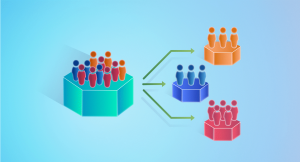
Understanding customer behavior precisely is crucial in online sales, and customer segmentation helps achieve this. However, traditional methods don’t capture all customer insights. Large Language Models (LLMs) change the game by processing complex data and uncovering subtle consumer trends, enhancing segmentation. This article explores how LLMs revolutionize customer segmentation, dives into detailed clustering results, and concludes with an insightful RFM analysis, highlighting the significant edge LLMs provide in e-commerce strategies.
The Old Way vs. The New Way

In the past, our go-to strategy for customer segmentation involved using a method known as ‘k-means clustering.’ This approach was all about dividing customers into groups based on certain shared characteristics we could identify from the data they left behind, like their purchase history, browsing patterns, and general preferences. It was a lot like assembling a puzzle, grouping together pieces that seemed to fit based on similar traits. While effective to a degree, k-means clustering alone often left us with a somewhat blurry picture. The groups weren’t always distinct, and sometimes, customers who seemed to fit into one category would exhibit behavior characteristic of another.
Consequently, the marriage of k-means clustering and LLM opens the door to a treasure trove of customer understanding. For instance, LLM can help us discern not just what products a customer prefers, but also why they prefer them. In essence, the addition of LLM is like switching on a spotlight, allowing us to see these groups in vivid detail and color, enhancing our marketing strategies and customer engagement like never before.
K-Means
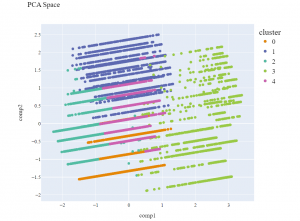
Looking at this PCA-generated figure, which simplifies our data into a two-dimensional image, we see an issue: the customer clusters are overlapping instead of being distinct. This ‘messiness’ shows that our current segmentation isn’t clear-cut, highlighting the need for better tools to create clearer, more defined customer groups.
K-Means + LLM
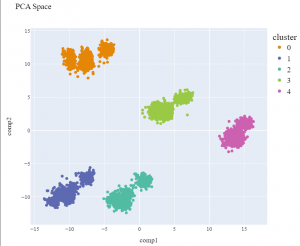
In contrast, the enhanced method of k-means combined with LLM presents a different picture. The scatter plot, simplified via PCA, shows distinctly clearer clusters. This clarity demonstrates the strength of integrating LLM, offering a refined, more effective segmentation approach.
Meet your Shoppers: Understanding Customer Clusters
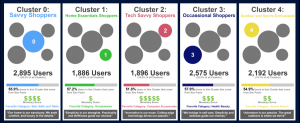
Cluster cards are vital in customer segmentation, serving as visual aids that highlight key characteristics of different groups. These insights facilitate the creation of ‘personas,’ detailed profiles representing various customer preferences, mindsets, and needs. Each persona is unique, often distinguished by factors like spending habits (‘monetary scores’) and specific interests. For example, one cluster might reveal a ‘luxury enthusiast’ persona with high spending in premium categories, while another represents a ‘value-driven buyer’ with consistent, moderate purchases.
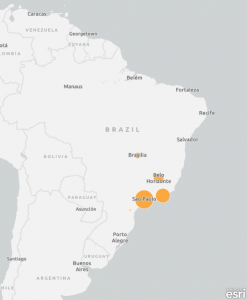
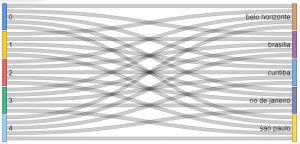
From our data, it’s obvious that a significant portion of customers is based in São Paulo. However, when examining individual clusters, we observe a diverse geographical distribution within each group, indicating that customers from various locations are proportionately represented. Consequently, geography, in this context, doesn’t serve as a distinguishing factor in differentiating one cluster from another.
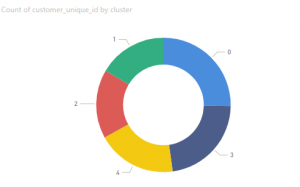
Delving deeper into our cluster analysis, the provided donut chart offers a clear visualization. It reveals that ‘Cluster 0,’ also dubbed the ‘Savvy Shoppers,’ constitutes the largest segment among all customer groups.
Making Sense of It All: The RFM Analysis
What is RFM analysis?

RFM analysis is a proven marketing strategy used to quantitatively evaluate customer value. The acronym RFM stands for:
- Recency (R) : How recently did the customer make a purchase?
- Frequency (F) : How often do they purchase?
- Monetary Value (M) : How much do they spend?
Applying RFM metrics to our clusters allows us to dissect and understand the nuances within each group better. By gauging the recency, frequency, and monetary value of transactions within a cluster, we can derive more granular insights into its behavior and value, paving the way for more tailored and effective marketing interventions.
How we applied RFM to understand customers’ buying habits
We applied RFM by segmenting customers based on three key metrics: the recency of their last purchase, the frequency of their transactions, and the overall monetary value of their purchases. This segmentation provided a clear lens to view and understand the distinct buying habits of each customer group within our clusters.

Cluster 2 or Tech Savvy Shoppers includes customers who spend the most.
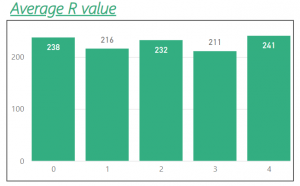
In terms of recency, there’s a negligible difference among the clusters; all appear to have nearly equivalent recent activity.
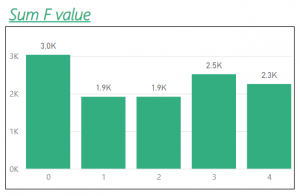
Cluster 0, termed ‘Savvy Shoppers,’ emerges as the most frequent buyers. This frequency underscores their distinctive purchasing behavior and interests.
Interesting findings from the RFM analysis
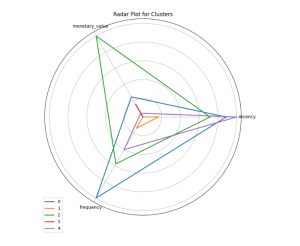
RFM analysis reveals that the ‘Tech Savvy Shoppers’ are our most loyal customer segment across all clusters. They consistently spend the most, maintain recent activity, and engage frequently. In contrast, the ‘Occasional Shoppers’ in the third group appear to offer limited engagement value. Meanwhile, ‘Savvy Shoppers’ from Cluster 0 hold promise and, with the right strategies, can be nurtured into even more profitable customers.
Conclusion

We enhanced customer segmentation by merging traditional k-means clustering with the precision of Large Language Models (LLMs). This integration revealed nuanced insights into our customer clusters. Delving deeper with visual tools, we crafted data-driven personas and concluded with an RFM analysis, pinpointing segments like ‘Tech Savvy Shoppers’ as standout loyal customers.
References
https://aainabajaj39.medium.com/rfm-analysis-for-successful-customer-segmentation-using-python-6291decceb4b
https://ploiitubsamon.medium.com/rfm-analysis-for-customer-segmentation-with-power-bi-5d2f5bd62038
https://www.kaggle.com/datasets/olistbr/brazilian-ecommerce

Your article on the impact of Large Language Models (LLMs) in transforming customer segmentation for online sales is eye-opening. It’s clear that the fusion of traditional methods like k-means clustering with LLM technology is taking customer understanding to a whole new level. The inclusion of RFM analysis adds another layer of depth, promising a future of more precise e-commerce strategies and enhanced customer engagement. Great work!
I thoroughly enjoyed this article’s exploration of the integration of LLM into E-commerce websites. The way LLM improved the accuracy of customer segmentation and facilitated RFM analysis is truly impressive. It’s clear that this technology has the potential for the future, and I found the results discussed in the article to be particularly exciting.